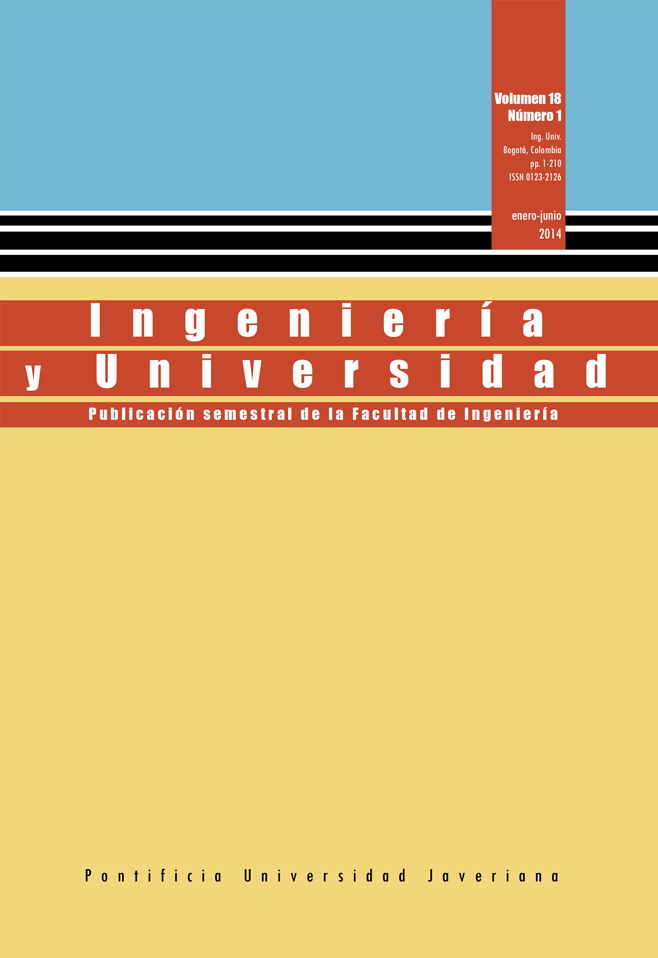Abstract
In this paper the design and experimental verification of a switched beam antenna with low SLL, formed by an aperture-coupled linear array antenna 1 × 6 elements and fed by a 4 × 6 reduced Butler matrix for the SIM (Industrial, Scientific and Medical) band in 2.45 GHz is presented. The antenna was designed and manufactured domestically with a compact multilayer microstrip technology, total thickness of 62 mil, and the ability to switch 4 beams.
BALANIS, C. A. Antenna theory: Analysis and design. New York: John Wiley and Sons, 2005.
BELLOFIORE, S.; BALANIS C.; FOUTZ, J. y SPANIAS, A. Smart-antenna systems for mobile communication networks part I: Overview and antenna design. Antennas and Propagation Magazine. 2002, vol. 44, pp. 145-154.
BUTLER, J. L. Multiple beam antenna system employing multiple directional couplers in the leading. s. d., 1966.
EL-TAGER, A. y ELEIWA, M. Design and implementation of a smart antenna using Butler matrix for ism-band. Progress in Electromagnetics Research Symposium, 2009.
GRUSZCZYNSKI, S.; WINCZA, K. y SACHSE, K. Reduced sidelobe four-beam n -element antenna arrays fed by 4 × n Butler matrices. Antennas and Wireless Propagation Letters, IEEE. 2006, vol. 5, pp. 430-434.
HALL, P. y VETTERLEIN, S. Review of radio frequency beamforming techniques for scanned and multiple beam antennas. Microwaves, Antennas and Propagation, IEE Proceedings H. 1990, vol. 137, pp. 293-303.
HIRANANDANI, M. y KISHK, A. Widening butler matrix bandwidth within the x-band. Antennas and Propagation Society International Symposium, 2005 IEEE, 2005.
IBRAHIM, S.; RAHIM, M.; MASRI, T.; KARIM, M. y AZIZ, M. A. Multibeam antenna array with Butler matrix for WLAN applications. The Second European Conference on Antennas and Propagation, Edinburgh, 2007.
JIZAT, N.; RAHIM, S. y RAHMAN, T. Dual band beamforming network integrated with array antenna. Fourth Asia International Conference on Mathematical/Analytical Modelling and Computer Simulation (AMS), 2010.
JUNG, S.; NEGRA, R. y GHANNOUCHI, F. A design methodology for miniaturized 3-db branch-line hybrid couplers using distributed capacitors printed in the inner area. IEEE Transactions on Microwave Theory and Techniques. 2008, vol. 56, pp. 2950-2953.
KAMARUDIN, M. y HALL, P. Switched beam antenna array with parasitic elements. Progress in Electromagnetics Research B. 2009, vol. 13, pp. 187-201.
KHAN, O. Design of x-band 4x4 butler matrix for microstrip patch antenna array. TENCON 2006. 2006 IEEE Region 10 Conference, 2006.
LIU, Z. y WEIKLE, R. A compact quadrature coupler based on coupled artificial transmisión lines. Microwave and Wireless Components Letters, IEEE. 2005, vol. 15, pp. 889-891.
LUDWIG, R. y BOGDANOV, G. RF circuit design. New York: Pearson Education, 2009.
MBAREK, T. y GHARSALLAH, A. Mutual coupling in phased arrays for 3×4 Butler matrices antenna network. 2nd International Conference on Signals, Circuits and Systems, 2008.
MUHAMMAD, N.; RAHIM, S.; JIZAT, N.; RAHMAN, T.; TAN, K. y REZA, A. Beam forming networks using reduced size butler matrix. Wireless Personal Communications. 2010, pp. 1-20.
NEDELCHEV, M. e ILIEV, I. Synthesis and analysis of reduced-size branch-line hybrids. Microwave Review. 2008, vol. 2, pp. 16-19.
NEDIL, M.; HABIB, A. y DENIDNI, T. Novel ultra-wideband cb-cbw Butler matrix. Antennas and Propagation Society International Symposium, 2008.
POZAR, D. M. Analysis of an infinite phased array of aperture coupled microstrip patches. IEEE Transactions on Antennas and Propagation. 1989, vol. 37, pp. 418-425.
POZAR, D. M. Microstrip antennas. Proceedings of the IEEE. 1992, vol. 80, pp. 79-90.
POZAR, D. M. y KAUFMAN, B. Design considerations for low sidelobe microstrip arrays. IEEE Transactions on Antennas and Propagation. 1990, vol. 38, pp. 1176-1185.
REMEZ, J. y CARMON, R. Compact designs of waveguide butler matrices. Antennas and Wireless Propagation Letters, IEEE. 2006, vol. 5, pp. 27-31.
SAKAGAMI, I.; MUNEHIRO, T. y TERAOKA, R. A reduced branch-line coupler with eight stubs. Microwave Conference Proceedings, 1997. APMC ’97, 1997 Asia-Pacific, 1997.
TANG, C. y CHEN, M. Synthesizing microstrip branch-line couplers with predetermined compact size and bandwidth. IEEE Transactions on Microwave Theory and Techniques. 2007, vol. 55, pp. 1926-1934.
TANG, C.; CHEN, M. y TSAI, C. Miniaturization of microstrip branch-line coupler with dual transmisión lines. Microwave and Wireless Components Letters, IEEE. 2008, vol. 18, pp. 185-187.
WANG, C.; MA, T. y YANG, C. A new planar artificial transmission line and its applications to a miniaturized butler matrix. IEEE Transactions on Microwave Theory and Techniques. 2007, vol. 55, pp. 2792-2801.
WIGHT, J.; CHUDOBIAK, W. y MAKIOS, V. A microstrip and stripline crossover structure. IEEE Transactions on Microwave Theory and Techniques. 1976, vol. 24, p. 270.
WINCZA, K.; GRUSZCZYNSKI, S. y SACHSE, K. Conformal four-beam antenna arrays with reducedsidelobes. Electronics Letters. 2008, vol. 44, pp. 174-175.
WINCZA, K.; GRUSZCZYNSKI, S. y SACHSE, K. Reduced sidelobe four-beam antenna array fed by modified Butler matrix. Electronics Letters. 2006, vol. 42, pp. 508-509.
This journal is registered under a Creative Commons Attribution 4.0 International Public License. Thus, this work may be reproduced, distributed, and publicly shared in digital format, as long as the names of the authors and Pontificia Universidad Javeriana are acknowledged. Others are allowed to quote, adapt, transform, auto-archive, republish, and create based on this material, for any purpose (even commercial ones), provided the authorship is duly acknowledged, a link to the original work is provided, and it is specified if changes have been made. Pontificia Universidad Javeriana does not hold the rights of published works and the authors are solely responsible for the contents of their works; they keep the moral, intellectual, privacy, and publicity rights.
Approving the intervention of the work (review, copy-editing, translation, layout) and the following outreach, are granted through an use license and not through an assignment of rights. This means the journal and Pontificia Universidad Javeriana cannot be held responsible for any ethical malpractice by the authors. As a consequence of the protection granted by the use license, the journal is not required to publish recantations or modify information already published, unless the errata stems from the editorial management process. Publishing contents in this journal does not generate royalties for contributors.



